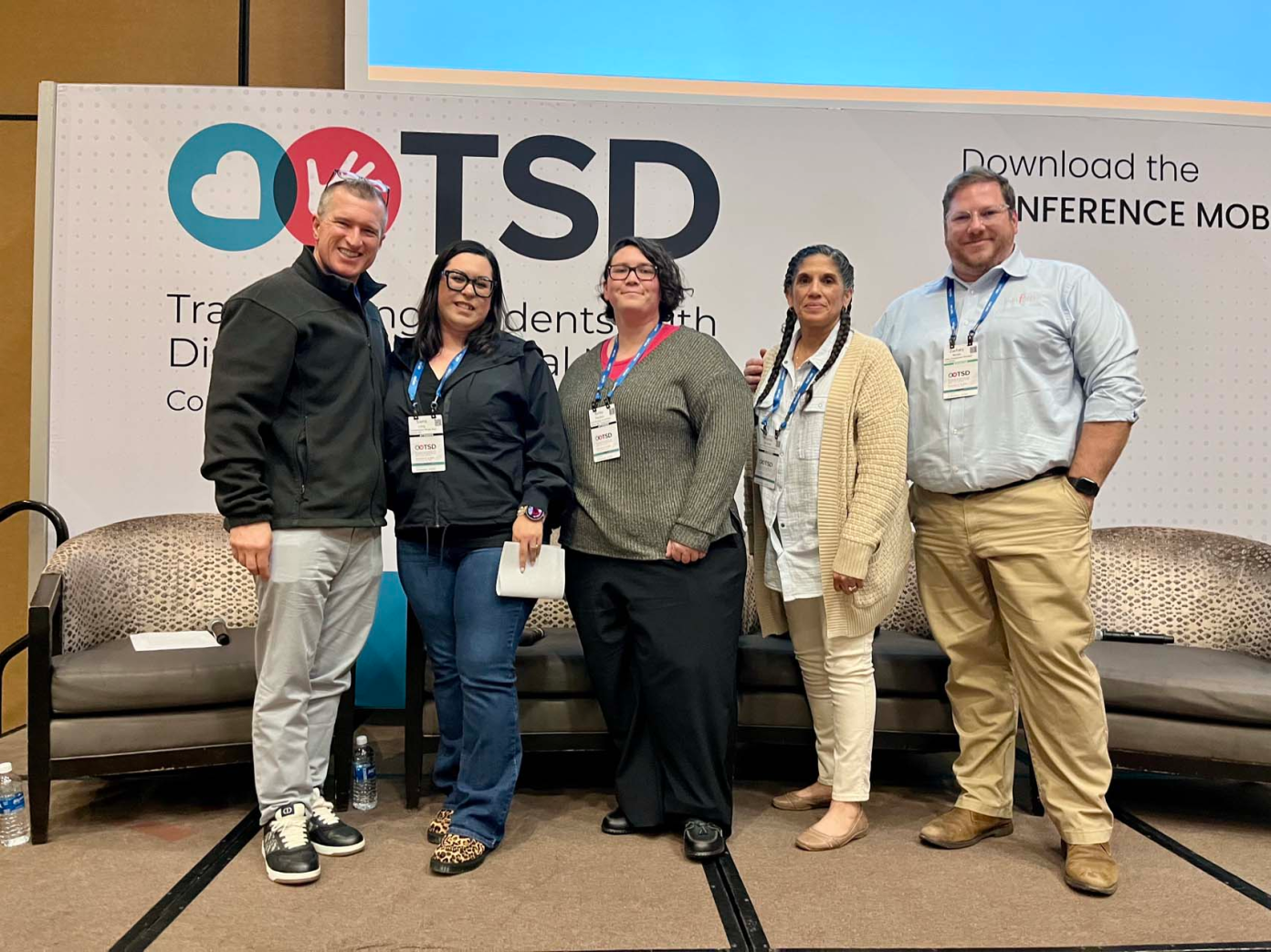The latest revision of the National Highway Traffic Safety Administration (NHTSA) eight-hour course on the proper securement of students with disabilities and preschool children on school buses was rolled out to the student transportation industry for the first time at the Transporting Students with Disabilities and Special Needs Conference in Frisco, Texas.
The Child Passenger on School Buses National Training was taught by Denise Donaldson, a child passenger safety technician instructor (CSPT-I) and editor and publisher of the Safe Ride News publication, alongside CPSTs Sue Shutrump and Charlie Vits, Fred Doelker, the director of training programs for Dean Transportation, and Miriam Manary, lead research engineer for the University of Michigan Transportation Research Institute. The training took place at Prosper (Texas) Independent School District on Nov. 13, to formally close the five-day TSD conference.
Donaldson, Shutrump and Vits, revised the curriculum for NHTSA. The training was first offered at the Kidz in Motion National Child Passenger Safety Conference in August.
New this year, as discussed at the National Association of State Directors of Pupil Transportation Services Annual Conference in October, is additional flexibility being given to those looking to take the course. Laura Dunn, the highway safety specialist at NHTSA, told NASDPTS conference attendees that an online component will soon be available, which will make access to the course more accessible and allow interested participants the ability to take advantage of training materials at their leisure.
Dunn added there are two versions of the course being offered. One is designed for previously certified child passenger safety technicians and the other for pupil transportation personnel. Topics included in both trainings cover the types of school buses, federal motor vehicle safety standards, occupant protection, car seat use, transporting students with disabilities, and emergency evacuations. However, the child passenger safety technician course will not include general CPST information that students have already been trained in.
The delivery methods for both courses include hybrid and in-person.
Dunn noted online courses are available free of charge at carseateducation.org, to allow participants to take specific courses of interest at their own time. Examples include training on car seat basics and children left in hot vehicles.
The hybrid model is similar to the pupil transportation certification training. Participants would complete the online learning and then patriciate in a shortened in-person, hands-on session, which is around two hours long. The in-person course is a full eight-hour training consisting of classroom and hands-on learning offered at the TSD Conference and STN EXPO in both Indianapolis, Indiana, and Reno, Nevada.
The eight-hour class provides an overview of the use of child safety restraint systems on school buses, focusing on pre-school aged children and children with disabilities. In addition to hands-on training, in which participants practice installing various types of child safety restraint systems, with guidance from skilled CPTSs, instructional videos are also shown.
Meanwhile, the shortened CPST course is around five hours long. Introductory is removed because existing CPSTs already learned the information during their initial training certification.
Updates to the overall course include the use of more videos to demonstrate CSRS installation in school buses and technical, specialized content. Dunn noted that cpsboard.org/schoolbus will launch with the curriculum next year. It will serve as an online home for the training so that participants no longer need a printed manual. In the meantime, visit cpsboard.org for more information.
Other features of the website include a training calendar so participants can see when and where classes are offered as well as a group training option, where an administrator can track the progress of those completing the training within the group.
Read more about the specific changes to Child Passenger on School Buses National Training in the January issue of School Transportation News.







